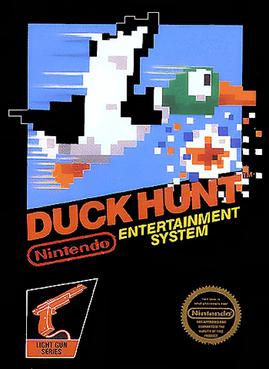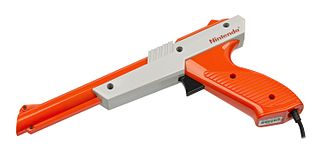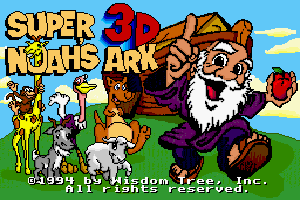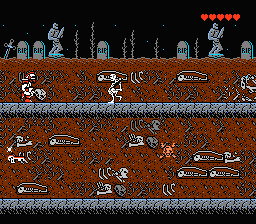
Duck Hunt is a 1984 light gun shooter video game developed and published by Nintendo for the Nintendo Entertainment System (NES) video game console and the Nintendo VS. System arcade hardware. The game was first released in April 1984, in Japan for the Family Computer (Famicom) console and in North America as an arcade game. It became a launch game for the NES in North America in October 1985, and was re-released in Europe two years later.

A light gun is a pointing device for computers and a control device for arcade and video games, typically shaped to resemble a pistol.

The Aladdin Deck Enhancer is a system-enhancing adaptor to use Compact Cartridges on the Nintendo Entertainment System. It was produced by Camerica and developed by Codemasters but not licensed by Nintendo. It is similar to the Datach system for the Famicom, but without the Barcode feature. It was released in November 1992, with its planned library to reach a total 24 games by the end of 1993. However, only seven games were actually released. The device had low sales and Camerica went bankrupt in 1993.

The NES Zapper, also known as the Video Shooting Series light gun in Japan, is an electronic light gun accessory for the Nintendo Entertainment System (NES) and the Japanese Famicom. It was released in Japan for the Famicom on February 18, 1984, and launched alongside the NES in North America in October 1985.

R.O.B. is a toy robot accessory for the Nintendo Entertainment System (NES). It was launched in July 1985 as the Family Computer Robot in Japan, and October 1985 as R.O.B. in North America. Its short lifespan yielded only two games in the Robot Series: Gyromite and Stack-Up.

The Super Game Boy is a peripheral that allows Game Boy cartridges to be played on a Super Nintendo Entertainment System console. Released in June 1994, it retailed for $59.99 in the United States and £49.99 in the United Kingdom. In South Korea, it is called the Super Mini Comboy and was distributed by Hyundai Electronics. A revised model, the Super Game Boy 2, was released in Japan in January 1998.

Super 3D Noah's Ark is a non-violent Christian first-person shooter developed and published by Wisdom Tree for the Super Nintendo Entertainment System (SNES) in 1994 and MS-DOS in 1995. Its gameplay is similar to that of Wolfenstein 3D due to Wisdom Tree's licensing of the game's engine from id Software. Wisdom Tree opted not to secure a license from Nintendo for the game's SNES release. While not illegal, it prevented the game from being sold at most video game retailers, which were under a contractual agreement with Nintendo not to sell unlicensed games for the company's consoles. As a result, the SNES release of Super 3D Noah's Ark was sold primarily via Christian bookstores.

Masayuki Uemura was a Japanese engineer, video game producer, and professor. He was known for his work as an employee of Nintendo from 1971 to 2004, most notably for serving as a key factor in the development of the Nintendo Entertainment System.

Wisdom Tree, Inc. is an American developer of Christian video games. It was an offshoot of Color Dreams, one of the first companies to work around Nintendo's 10NES lockout chip technology for the Nintendo Entertainment System. Color Dreams formed the Wisdom Tree subsidiary in 1990 in an effort to circumvent Nintendo's restrictions against publishers of unlicensed video games for the NES by selling their games at Christian book stores which was not subject to pressure by Nintendo.
In video gaming, famiclone is a term used to refer to a hardware clone of the Nintendo Entertainment System (NES), known in Japan as the Family Computer or Famicom. They are designed to replicate the workings of, and play games designed for, the NES and Famicom. Hundreds of unauthorized clones and unlicensed game copies have been made available since the height of the NES popularity in the late 1980s. The technology employed in such clones has evolved over the years: while the earliest clones feature a printed circuit board containing custom or third party integrated circuits (ICs), more recent (post-1996) clones utilize single-chip designs, with a custom ASIC which simulates the functionality of the original hardware, and often includes one or more on-board games. Most devices originate in China and Taiwan, and less commonly South Korea. Outside China and Taiwan, they are mostly widespread across emerging markets of developing countries.

Hogan's Alley is a light gun shooter video game developed and published by Nintendo. It was released for the Family Computer in 1984 and then the arcade Nintendo VS. System and Nintendo Entertainment System in 1985. It was one of the first hit video games to use a light gun as an input device, along with Nintendo's Duck Hunt (1984). The game presents players with "cardboard cut-outs" of gangsters and innocent civilians. The player must shoot the gangs and spare the innocent people. It was a major arcade hit in the United States and Europe.

Gumshoe is a light gun shooter video game developed and published by Nintendo for the VS. System arcade hardware and the Nintendo Entertainment System console. It was released in 1986 in North America and in 1988 in Europe. Unusual for a Nintendo game, it was not released in Japan. It was designed by Yoshio Sakamoto.

The history of the Nintendo Entertainment System (NES) spans the 1982 development of the Family Computer, to the 1985 launch of the NES, to Nintendo's rise to global dominance based upon this platform throughout the late 1980s. The Family Computer or Famicom was developed in 1982 and launched in 1983 in Japan. Following the North American video game crash of 1983, the Famicom was adapted into the NES which was launched in North America in 1985. Transitioning the company from its arcade game history into this combined global 8-bit home video game console platform, the Famicom and NES continued to aggressively compete with next-generation 16-bit consoles, including the Sega Genesis. The platform was succeeded by the Super Famicom in 1990 and the Super Nintendo Entertainment System in 1991, but its support and production continued until 1995. Interest in the NES has been renewed by collectors and emulators, including Nintendo's own Virtual Console platform.

Color Dreams is an American company formerly known for developing and publishing unlicensed video games for the 8-bit Nintendo Entertainment System (NES). The company left the video game industry in the mid-1990s, shifting its focus to IP cameras and related surveillance equipment.

Chiller is a light gun arcade game released in 1986 by Exidy. An unlicensed port was released for the Nintendo Entertainment System in 1990 by American Game Cartridges in the US, and in Australia by HES, with the option of using either the standard controller or the NES Zapper.
VG Pocket is a series of handheld dedicated game consoles built by JungleTac and sold by Performance Designed Products LLC. The VG Pocket model was the first console of its type to have a 2" backlit color LCD screen.

King Neptune's Adventure is an unlicensed sidescroller adventure game created for the Nintendo Entertainment System that was released in 1990 by Color Dreams. Players play as King Neptune, as they venture through ships, oceans and Atlantis.

The Nintendo Entertainment System (NES) is an 8-bit third-generation home video game console produced by Nintendo. It was first released in Japan in 1983 as the Family Computer (FC), commonly referred to as Famicom. It was redesigned to become the NES, which was released in American test markets on October 18, 1985, and was soon fully launched in North America and other regions.

The Retro Duo is a handheld game console developed by Retro-Bit and distributed by Innex, Inc. It plays game cartridges for the Nintendo Entertainment System and Super Nintendo Entertainment System. It plays North American, European and Japanese games and has the highest compatibility of any other clone system. S-video is compatible when playing SNES games. The console is not licensed by Nintendo and it's not fully compatible with every game released for the two game systems, but the majority of games function properly. While it has only been released in Canada and the United States, it can still be used in Europe and Japan with a power plug adapter. The console is compatible with official and third party SNES controllers.

The Nintendo Entertainment System Game Pak is the software storage medium for the Nintendo Entertainment System.




















